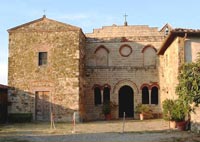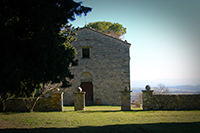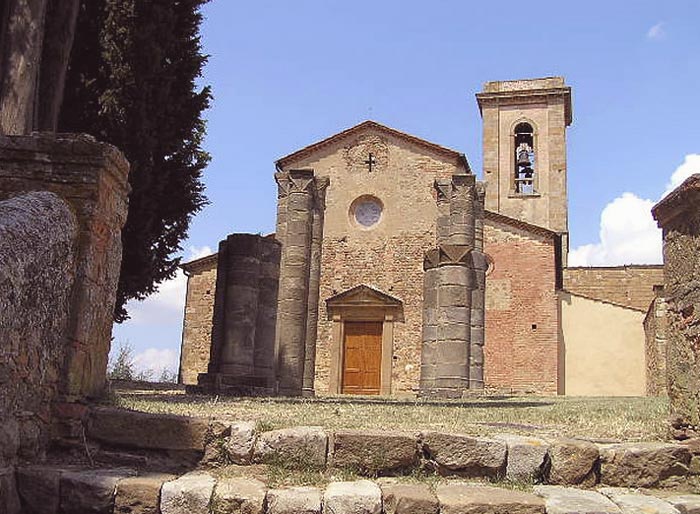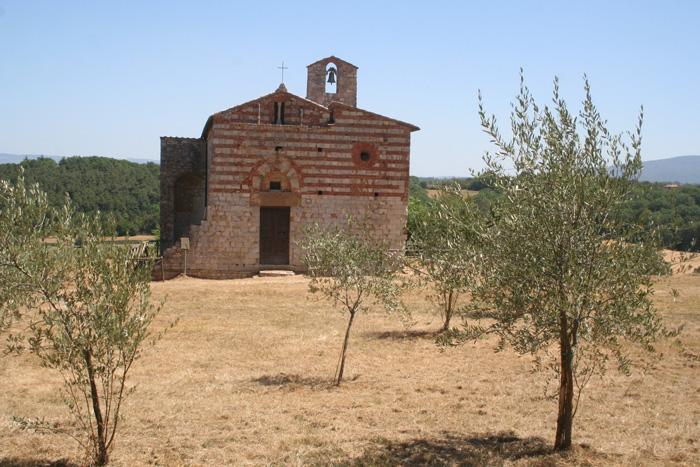 |
Pieve of SS. Ippolito and Cassiano(Conèo) |
|
The presence of christian communities in this valley dates back to the 5th century, as many country churches, Pievi, were located along the old Roman roads and can be found throughout Tuscany, Umbria and Emilia - Romagna. The term pievi is thought to have come from the Latin plebs, denoting their function among the common people. These crudely built rural churches were built to spread Christianity into the pagan hinterlands of medieval Italy by providing a place where baptisms might be performed. |
 |
||||
| The Pieve dei Santi Vito e Modesto a Corsignano in Pienza | ||||
Pienza was rebuilt from a village called Corsignano, which was the birthplace (1405) of Aeneas Silvius Piccolomini (Italian: Enea Silvio Piccolomini), a Renaissance humanist born into an exiled Sienese family, who later became Pope Pius II. Once he became Pope, Piccolomini had the entire village rebuilt as an ideal Renaissance town. Its origins can be traced to the VII century, while the actual version dates back to the 12th century. Inside is the baptismal font where Pio II and his nephew Pio III were baptized. The scenery of the Val d’Orcia begins with a symmetry of natural harmony with its rolling hills, and then changes into the majestic grandeur of the Amiata. Monticchiello, La Foce and San Quirico d'Orcia are situated within an hour's drive from Podere Santa Pia. The road which leads from Castiglioncello Bandini to Monticchiello and San Quirico, passing first through Castello Porrona, Montalcino and Pienza, is breathtaking. Picture Gallery Pienza and the pieve di Corsignano
|
||||
 |
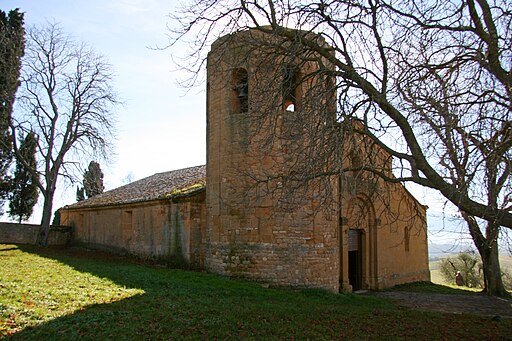 |
 |
||
| Pienza | Pieve dei Santi Vito e Modesto a Corsignano
|
Pieve Corsignano interno
|
||
 |
 |
 |
||
Portale d'ingresso della Pieve dei Santi Vito e Modesto a Corsignano, Pienza
|
Portale laterale | |||
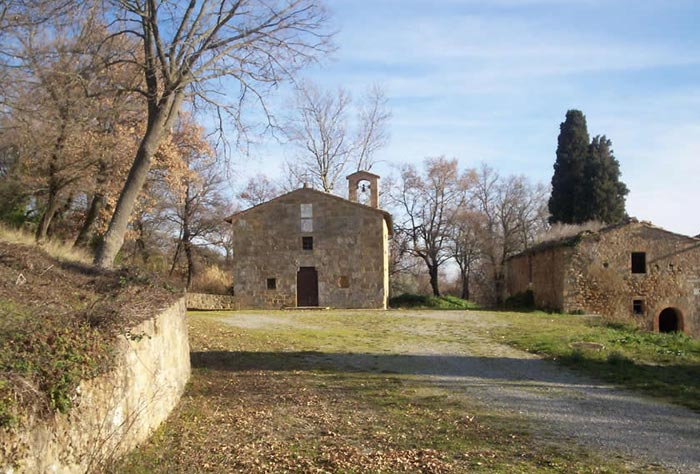 |
||||
| Pieve di Santa Maria dello Spino |
||||
The Pieve di Santa Maria dello Spino, between Monticchiello and Bagno Vignoni, is used on the annual Corpus Domini procession, the Processione del Corpus Domini.
|
||||
The Pieve di San Stefano in Cennano |
||||
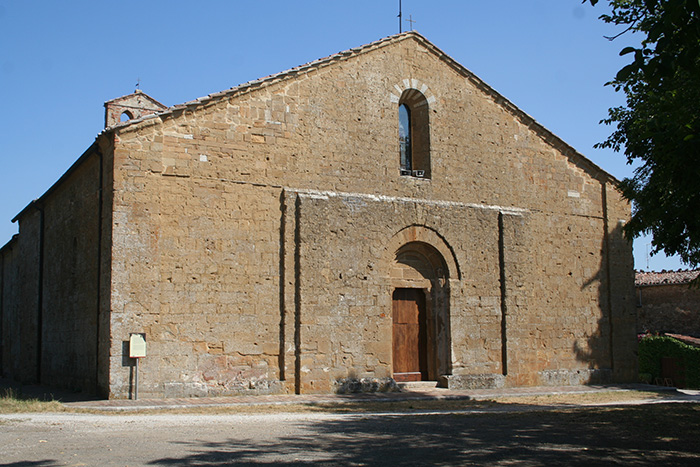 |
||||
Pieve di Santo Stefano a Cennano, façade
|
||||
| Monastero di S.Pellegrino in Passeno in Castelmuzio |
||||
| Monastery of the Pilgrim in Passeno, near Castelmuzio was founded in the 7th century (653-661) by a Longobardian lord named Ursus Ariman, and was located close to an alternate route of the Roman via Francigena. | ||||
 |
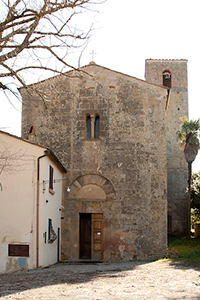 |
|||
| Pieve Santa Restituta, Montalcino | ||||
La Pieve di Sant'Appiano
|
||||
|
||||
| La Pieve di Sant'Appiano | ||||
La Pieve di Sant'Appiano si trova nell'omonima località del comune di Barberino Val d'Elsa. La pîeve ècontornato da severi cipressi e si compone della Pieve Romanica, delle rovine di un diruto edificio ottagonale, del chiostro, della canonica e di un gruppo di case lievemente discosto, costituenti il villaggio. Alla bellezza del paesaggio si accompagna la sacralità del luogo, qui infatti, si conservano le spoglie del Santo che ha dato il nome alla località.
|
||||
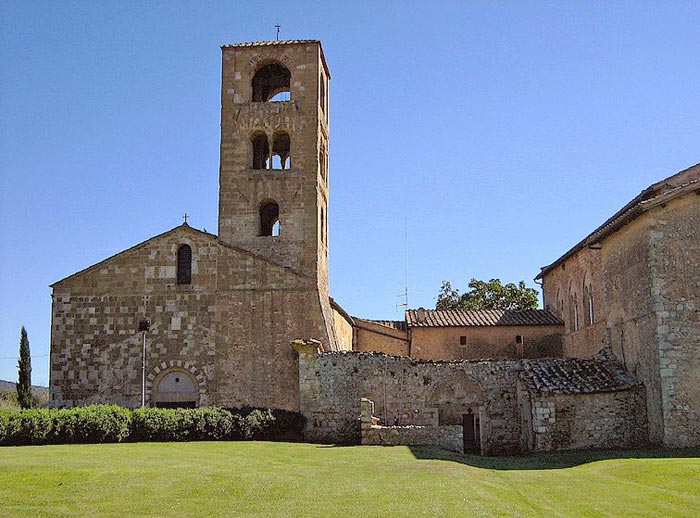 |
||||
Pieve di San Giovanni Battista a Ponte allo Spino, Sovicille, Montagnola Senese
|
||||
 |
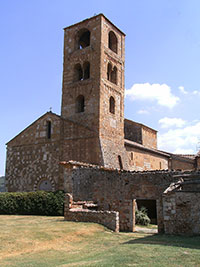 |
 |
||
Sovicille, Pieve di San Giovanni Battista a Ponte allo Spino
|
Sovicille, Pieve di San Giovanni Battista a Ponte allo Spino | Pieve di San Giovanni Battista a Ponte allo Spino, absidi | ||
 |
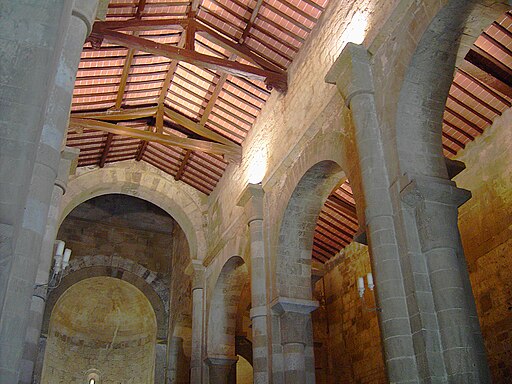 |
 |
||
| Pieve di Ponte allo Spino, resti dell'antico chiostro, colonnetta romana | Pieve di San Giovanni Battista a Ponte allo Spino, interno
|
Pieve di San Giovanni Battista a Ponte allo Spino, interno | ||
|
||||
Mappa pievi Romaniche della Toscana e oltre
|
Pievi Romaniche della Toscana e oltre | Romanesque churches in Tuscany and beyond | Mappa | Map |

